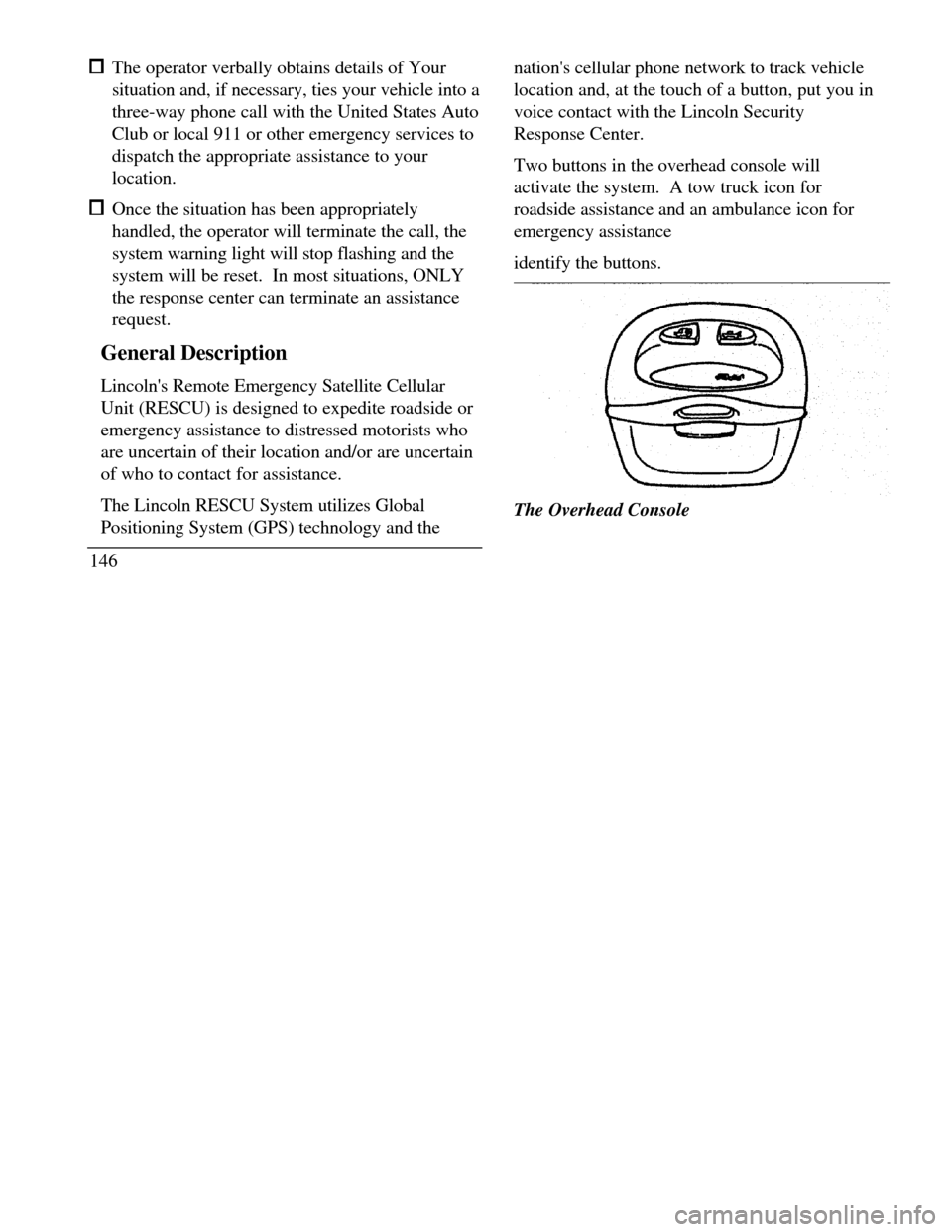Page 23 of 320

The Importance of Being Properly
Seated
In a collision, the air bag must inflate extremely
fast to help provide additional protection for
you. In order to do this, the air bag must inflate
with considerable force. If you are not seated in
a normal riding position with your back against
the seatback, the air bag may not protect you
properly and could possibly hurt you as it
inflates./!\ WARNINGIf a passenger is not properly seated andrestrained, an inflating air bag couldcause serious injury.In rear-facing infant seats, the infant's head is closer
to the air bag. The force of the rapidly inflating air
bag could push the top of the rear-facing seat
against the vehicle seatback or center armrests (if so
equipped), or center console (if so equipped).
Children weighing less than 40 lbs. (18 kg.) should
use child or infant seats. Forward facing child seats
must have the passenger seat moved as far back
from the instrument panel as possible.
Your vehicle is equipped with a right front
passenger air bag. Front passengers, especially
children and small adults, should never sit on the
edge of the seat, stand near the glove compartment
of the instrument panel, or lean over with their
faces near the glove compartment when the vehicle
is moving. All occupants should sit with their backs
against the seatback and use the safety belts.
19
Page 71 of 320
Lincoln RESCU System
(If equipped)
Lincoln RESCU runs a self-test when you start
your vehicle. During this test, the Lincoln RESCU
warning light, located in the overhead console, will
briefly illuminate. If a problem is detected during
the self-check, the light will remain lit and the
message "RESCU FAILURE" will be displayed on
the vehicle's message center for several seconds.If the warning light fails to briefly illuminate
when you start your vehicle or if it remains
lit, have your Lincoln RESCU System
checked by an authorized Lincoln/Mercury
dealer as soon as possible. Your system may
be inoperative.
68
Page 146 of 320

THIS DEVICE COMPLIES WITH FCC RULES,
PART 15. OPERATION IS SUBJECT TO THE
FOLLOWING TWO CONDITIONS: (1) THIS
DEVICE MAY NOT CAUSE HARMFUL
INTEREFERENCE AND (2) THIS DEVICE
MUST ACCEPT ANY INTEREFERENCE THAT
MAY BE RECEIVED, INCLUDING
INTEREFERENCE THAT MAY CAUSE
UNDESIRABLE OPERATION.
Maintenance Warning
The "Low Tire Pressure" warning will illuminate
and stay on when one of your vehicle's tires drops
below 18 psi (124 kps). The warning light will also
come on and stay lit if the Pressure Alert System has
malfunctioned.
If this warning appears, check the pressure in your
tires at the earliest possible convenience and adjust
any tire that is low to the recommended air pressure
level. This information can be found on the Service
Station Information page at the back of this manual
or on the driver's door placard.If the warning remains on after you have
adjusted the tires to recommended air pressure
levels, take your vehicle to an authorized
Lincoln/Mercury dealer for service.
Flat Tire Warning
If the sensors detect a tire pressure lower than I
0 psi (68 kps), the "Low Tire Pressure" warning
will flash repeatedly in the overhead console and
the message "Warning Low Tire Pressure" will
be displayed in the Message Center, indicating
an impending flat tire. If this condition occurs,
your Securitire requires service as soon as
possible. Refer to Servicing Your Secutitires.
NOTE: The Pressure Alert System will
activate only when the vehicle is moving faster
than 10 mph (15 km/h).
143
Page 148 of 320

Quick Summary To utilize your vehicle's assistance request
feature, YOUR CELLULAR PHONE MUST BE
ACTIVATED. Roadside or emergency assistance can be
requested whenever your key is in the
RUN/START position and for two minutes after
the vehicle is turned off. An assistance request is initiated by pressing
either the tow truck or ambulance button located
in the overhead console. When a button is pressed, a warning lamp located
in the overhead console begins to flash and status
messages are displayed on the vehicle's message
center. (Messages are only displayed when your
key is in the RUN/START position.) The vehicle's cellular phone automatically
places a call to a 24 hour emergency
response center. When contact is made, the vehicle sends an
electronic data message to the response center's
computer. This data message includes latitude
and longitude coordinates obtained from the
vehicle's positioning system. Once the data transmission is complete, the
call is forwarded to a response center
operator who confirms your location using a
computerized map. The vehicle's cellular handset is locked-out,
the phone is automatically placed in "hands
free" mode and voice communication is
established with the operator through the
"hands free" microphone. Typically, voice communication with an
operator is established within one minute
after an assistance button is pressed.
145
Page 149 of 320

The operator verbally obtains details of Your
situation and, if necessary, ties your vehicle into a
three-way phone call with the United States Auto
Club or local 911 or other emergency services to
dispatch the appropriate assistance to your
location. Once the situation has been appropriately
handled, the operator will terminate the call, the
system warning light will stop flashing and the
system will be reset. In most situations, ONLY
the response center can terminate an assistance
request.
General Description
Lincoln's Remote Emergency Satellite Cellular
Unit (RESCU) is designed to expedite roadside or
emergency assistance to distressed motorists who
are uncertain of their location and/or are uncertain
of who to contact for assistance.
The Lincoln RESCU System utilizes Global
Positioning System (GPS) technology and the
146nation's cellular phone network to track vehicle
location and, at the touch of a button, put you in
voice contact with the Lincoln Security
Response Center.
Two buttons in the overhead console will
activate the system. A tow truck icon for
roadside assistance and an ambulance icon for
emergency assistance
identify the buttons.The Overhead Console
Page 152 of 320

when appropriate, stay in direct phone contact
with you until emergency help arrives notify pre-designated family contacts or friends
of the emergency situation, if requested, or if no
response is received from the vehicle.
NOTE: If You are certain of your location, a direct
phone call to 911 or other emergency services may
provide a faster response.
Activation and Deactivation
When either of the two Lincoln RESCU buttons is
pressed, a warning light, located in the overhead
console, will begin to flash and status messages will
be displayed on the vehicle's message center,
confirming an assistance request has been made.
The warning light will continue to flash throughout
the activation.The RESCU Warning light
The system can be activated whenever your
ignition key is in the RUN/START Position and
for two Minutes after your vehicle is turned off.
In most situations, the assistance request can
ONLY be terminated and the system reset when
a special tone is sent to the vehicle by the
Lincoln Security Response Center. (See
Automatic Redial later in this chapter for
exceptions.) Operation will continue even if the
vehicle is turned off during an activation
(although visual feedback via the Message
Center will not be available in this situation).
149
Page 271 of 320

The Instrument Panel Fuses
Fuse
Location Fuse Amp
RatingDescription110An And-theft indicator light
n PWM dimming output for
microphone illumination,
ashtray illumination (R & L
rear door),heated seat
switches, heated backlight
switch, EATC control panel,
message center switches, cigar
lighter, console shift
illumination, navigation
display module, and
navigation switches210An Luxury radio
n Clock (non-navigational)
n Cellular phone310An Multi-function switch410An Run/Accessory sensor
(luxury radio)
n Cellular phone
n Run/Accessory sensor
(LCM)
n Window switches
backlight RF, LR, RR) *
n CompassFuse
LocationFuse Amp
RatingDescription4 (cont.)10A
· E/C mirror
· Stand alone clock
· Door lock switches backlight510A
· Virtual image cluster
· Light sensor (Autolamp)
· Traction Assist OFF switch
· Airbag diagnostic
· Luxury radio FCU
· Run/Start sensor (LCM)65A
· SCP network715A
· Right front turn lamp
· Right turn indicator
· HI beam switch
· Right and left front side
marker lamps
· Right and left front park
lamps
· Right and left front tail
lamps
· Right rear stop/turn lamps830A
· Fuel filler
· Trunk solenoid
· Navigation system power269
Page 285 of 320

Bulb specifications
FunctionTrade numberExterior illuminationBackup lamp3156Cornering lamp3156Headlamp9007High-mount brakelamp912License plate lamp168Luggage compartment lamp912Side marker - front lamp916NA*Side marker - rear lamp194Turn signal and park lamp - front3457NA*Turn signal, stoplamp and tail lamp
- rear3157Redundant turn - rear3157Decklid reflector168Instrument panel lightsElectronic automatic temperature
control***Air bag readiness light37Anti-lock warning lamp37And-theft warning lamp37Ash receptacle1445Ash ttay - rear doors37Clock***FunctionTradenumberInstrument panel lights (continued)Cluster illumination***Cluster control button37Compact disc player**Glove compartment194Headlamp switch nomenclature37Message center control buttons***“PRN@D I" bulb (floor console)194Rear window defrost switchnomenclature37Radio**Warning lights (cluster)37Interior courtesy lampsCigar lighter (door mounted)1893Door mounted lamp (front and rear)214-2Illuminated visor mirror (passenger)74Overhead console-reading lamps (without
moon roof)211-2Passenger assist handle (rear seat)211-2Under instrument panel906*NA means Natural Amber.
**Refer bulb replacement to a Ford -authorized radio service
center.
***Refer bulb replacement to a Ford or Lincoln-Mercury
dealer.
283